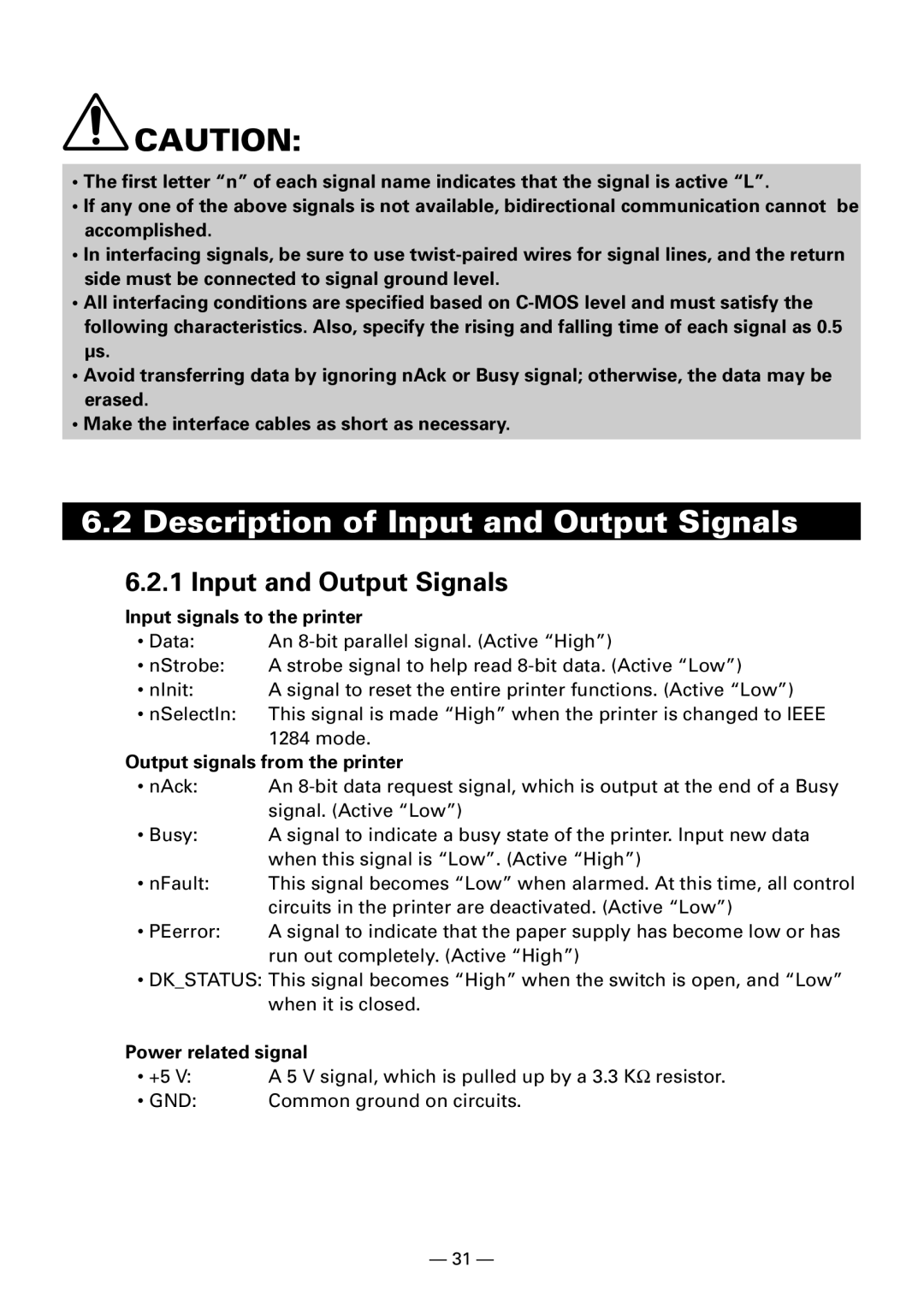
![]() CAUTION:
CAUTION:
•The first letter “n” of each signal name indicates that the signal is active “L”.
•If any one of the above signals is not available, bidirectional communication cannot be accomplished.
•In interfacing signals, be sure to use
•All interfacing conditions are specified based on
•Avoid transferring data by ignoring nAck or Busy signal; otherwise, the data may be erased.
•Make the interface cables as short as necessary.
6.2Description of Input and Output Signals
6.2.1 Input and Output Signals
Input signals to the printer
• Data: | An |
• nStrobe: | A strobe signal to help read |
• nInit: | A signal to reset the entire printer functions. (Active “Low”) |
• nSelectIn: | This signal is made “High” when the printer is changed to IEEE |
| 1284 mode. |
Output signals from the printer | |
• nAck: | An |
| signal. (Active “Low”) |
• Busy: | A signal to indicate a busy state of the printer. Input new data |
| when this signal is “Low”. (Active “High”) |
• nFault: | This signal becomes “Low” when alarmed. At this time, all control |
| circuits in the printer are deactivated. (Active “Low”) |
• PEerror: | A signal to indicate that the paper supply has become low or has |
| run out completely. (Active “High”) |
•DK_STATUS: This signal becomes “High” when the switch is open, and “Low” when it is closed.
Power related signal
•+5 V: A 5 V signal, which is pulled up by a 3.3 KΩ resistor.
• GND: | Common ground on circuits. |
— 31 —
